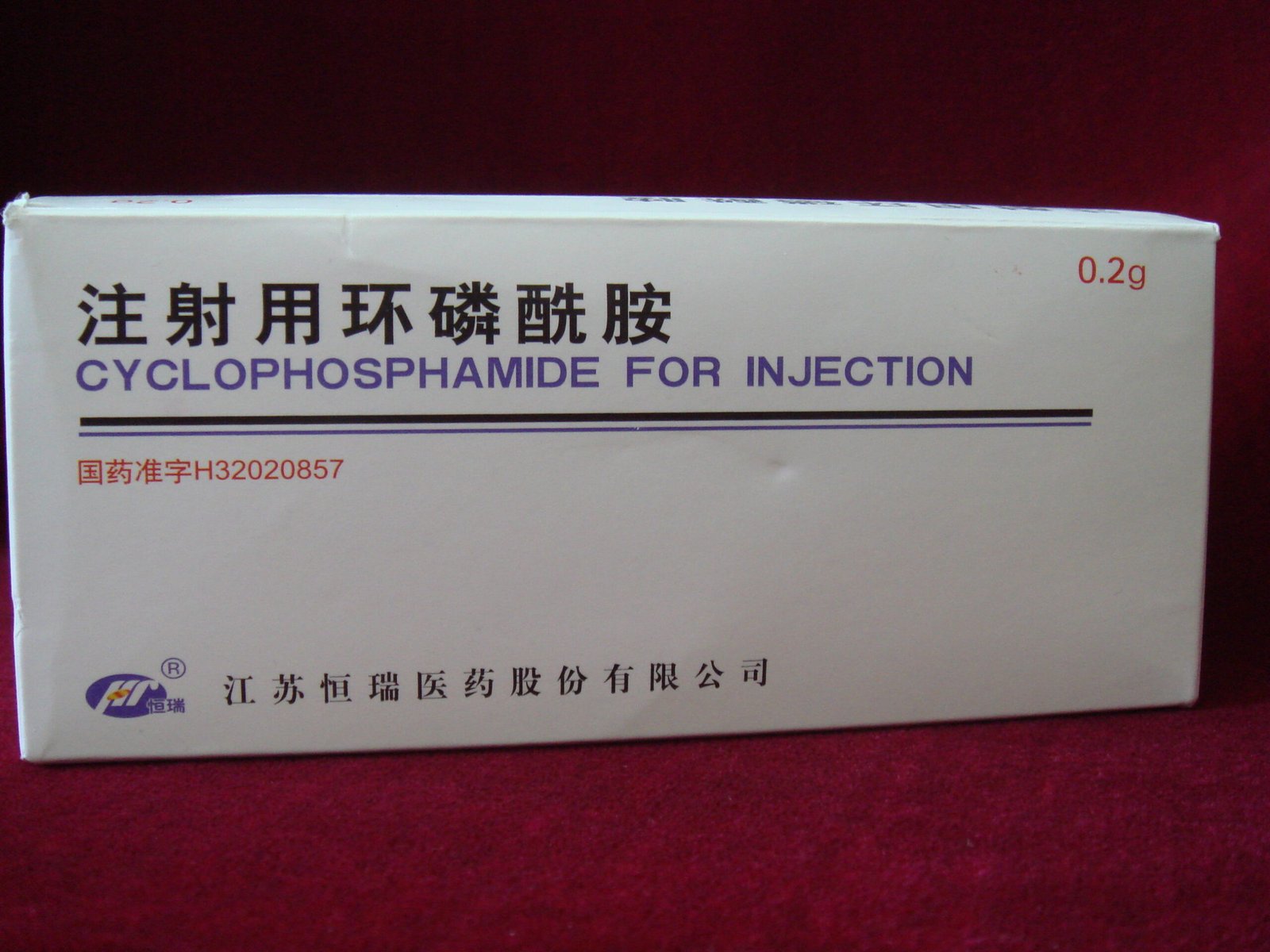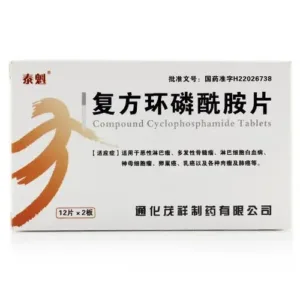Compound Cyclophosphamide Tablets.
Effects and efficacy:
For acute or chronic lymphocytic leukemia, myeloid leukemia, multiple myeloma. For malignant lymphoma: Hodgkin’s lymphoma, non-Hodgkin’s lymphoma, plasma cell tumor. For metastatic and non-metastatic malignant solid tumors: ovarian cancer, breast cancer, small cell lung cancer, neuroblastoma, Ewing’s sarcoma, testicular tumors, head and neck squamous cell carcinoma, nasopharyngeal carcinoma. For progressive autoimmune diseases: rheumatoid arthritis, psoriatic arthritis, systemic lupus erythematosus, scleroderma, systemic vasculitis (such as with nephrotic syndrome), certain types of glomerulonephritis (such as with nephrotic syndrome), myasthenia gravis, autoimmune hemolytic anemia, cold agglutinin disease. For immunosuppressive therapy during organ transplantation. For rhabdomyosarcoma and osteosarcoma.
Dosage and Administration: The use of cyclophosphamide requires the guidance of experienced oncologists. The dosage varies from person to person. Unless there is a special prescription, the general recommendations are as follows: Oral administration: 2-4 mg/kg per day, for 10-14 consecutive days, and repeat the administration after 1-2 weeks of discontinuation. Continuous treatment by intravenous drip: 3-6 mg/kg per day (120-240 mg/m2). Intermittent treatment: 10-15 mg/kg (400-600 mg/m2) once, once every 2-5 days. High-dose intermittent treatment and high-dose shock treatment (such as shock before bone marrow transplantation): 20-40 mg/kg (800-1600 mg/m2) once, once every 21-28 days. Intravenous injection of acute lymphocytic leukemia, acute and chronic myeloid leukemia allogeneic bone marrow transplantation pretreatment: 60 mg/kg once, for 2 consecutive days, combined with systemic radiotherapy or busulfan. Pretreatment before allogeneic bone marrow transplantation for severe aplastic anemia: 50 mg/kg once, for 4 consecutive days, alone or in combination with antithymocyte globulin. If Fanconi anemia occurs, the daily dose should be reduced to 15-20 mg/kg for 4 consecutive days. Patients with renal insufficiency: When the glomerular filtration rate is less than 10 ml/min, the dose should be reduced by 50%. Please follow the doctor’s advice for details. Patients with hepatic insufficiency: When the blood bilirubin is 3.1-5 mg/100 ml, the dose should be reduced by 25%. Please follow the doctor’s advice for details. Oral medication for children: 2-6 mg/kg per day, for 10-14 consecutive days, and repeat the dose after 1-2 weeks of discontinuation. Intravenous administration: The usage and dosage for children are the same as for adults. Note: The metabolites of cyclophosphamide are irritating to the urinary tract. Drink plenty of water during medication, at least 1500 ml of water per day. When taking large doses of medication, urinary tract protection drugs may also need to be added. For oral administration, it is usually recommended to take the medicine on an empty stomach. If stomach discomfort occurs, it can also be taken with food. Swallow the medicine whole without breaking, crushing or chewing it. If the drug leaks out of the blood vessel during intravenous administration, the injection should be stopped immediately, the extravascular drug solution should be extracted with a cannula, and other appropriate measures should be taken. The intravenous drip time is 30-120 minutes, and it is preferred to use an infusion pump or supporting device for intravenous drip.
Drug contraindications:
Allergic to this product is prohibited. It is prohibited during pregnancy and lactation.
Related dosage forms:
Tablets, injections
Share:
Products
Our offers
Health Classification
Let us work together to protect precious health






























